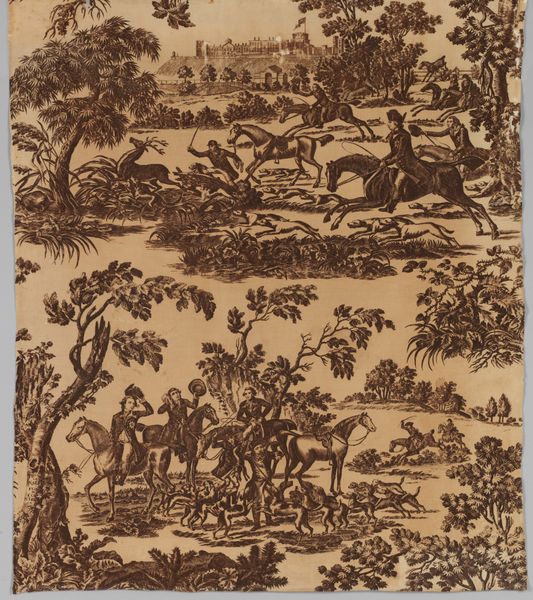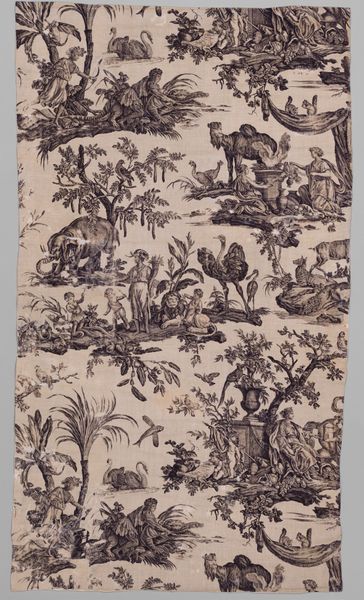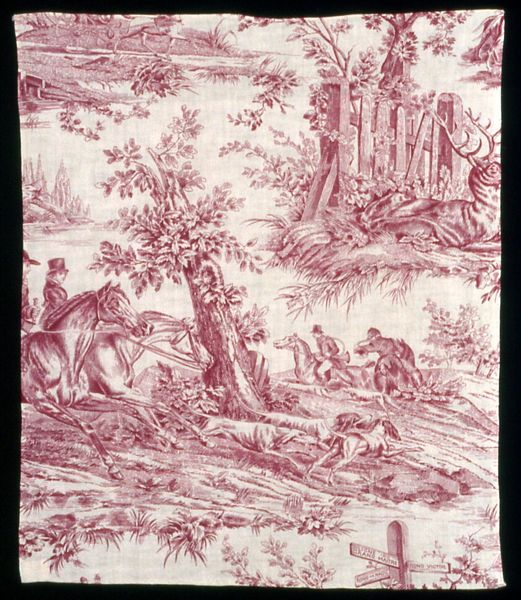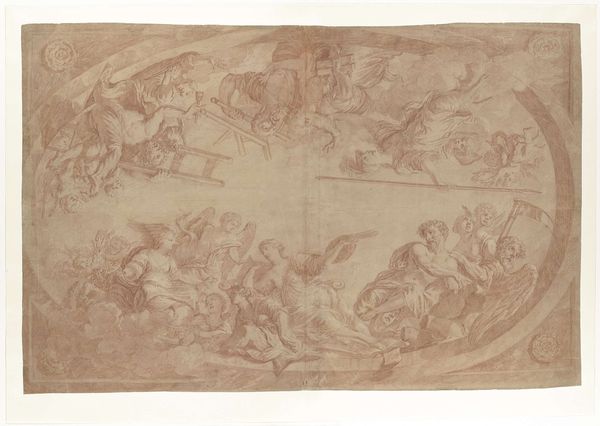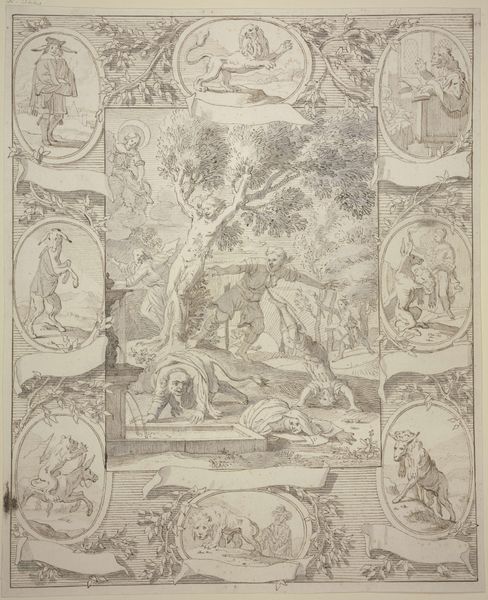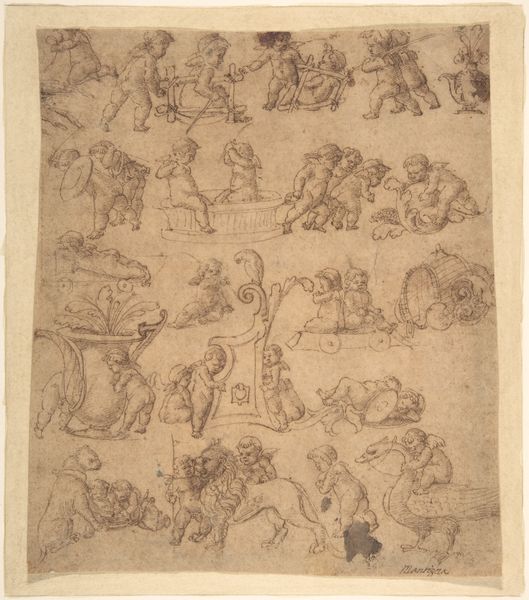
The Travels of Doctor Syntax (Furnishing Fabric) c. 1820
0:00
0:00
print, etching, textile
# print
#
etching
#
landscape
#
textile
#
etching
#
romanticism
#
genre-painting
#
history-painting
Dimensions: 70.5 × 60.5 cm (27 3/4 × 23 3/4 in.) Warp repeat: 53.4 cm (21 in.)
Copyright: Public Domain
Curator: Immediately, I’m struck by how this textile, "The Travels of Doctor Syntax," c. 1820, unfolds as a narrative across its surface, like a printed tapestry almost. Editor: My first impression is this reddish textile reminds me of faded memories; the sepia-toned fabric conveys a kind of nostalgic longing. It has a romantic yet busy quality. Curator: Thomas Rowlandson's print, through etching, becomes a repeat pattern on a furnishing fabric. Think about how a popular etching translated into readily-available decor changes the artwork's context, literally making art part of the furniture. Editor: Exactly! The pattern feels dense, packed with figures and action that speaks volumes about early 19th-century British society. It reflects a certain restlessness in England during that period, capturing the spirit of travel and exploration, even the colonial undertones of that impulse. Curator: I agree, considering the technology available at the time, producing such a detailed repeating design would have involved considerable labor and skill. The material itself speaks to burgeoning industrial production and shifts in domestic consumer culture. What were the power dynamics at play to facilitate this mass production? Editor: It is interesting to see genre scenes being historicized in such a casual medium! This brings art history, literature, and class together in an unusual dialog, making this textile's value inherently tied to intersectional interpretation and material means. Curator: Looking closely at the printing process and available dyes of the time tells you a great deal about global trade networks and social accessibility, or lack thereof, concerning these decorative domestic products. Editor: This opens up interesting questions about whose stories are being woven into these fabrics, and whose voices are noticeably absent. "Doctor Syntax" himself is a typecast individual who reflects contemporary attitudes and anxieties during times of significant social and political change. Curator: So, seeing this print adapted for domestic textiles makes you wonder if that dilutes the original artist’s message or actually democratizes it by introducing art into the everyday life of homes beyond the wealthy elite. Editor: It suggests an appetite for a narrative of journey and experience accessible in even the most intimate spaces of domestic life, democratizing Rowlandson's scenes beyond elite display into functional familiarity. Curator: So perhaps in studying the composition of everyday household items, we expose the often-invisible structures and hierarchies that shaped society. Editor: Yes, by examining these printed stories, we can investigate more than just artistry—we’re decoding social and political narratives deeply entwined within domestic textiles and Rowlandson's era.
Comments
No comments
Be the first to comment and join the conversation on the ultimate creative platform.

